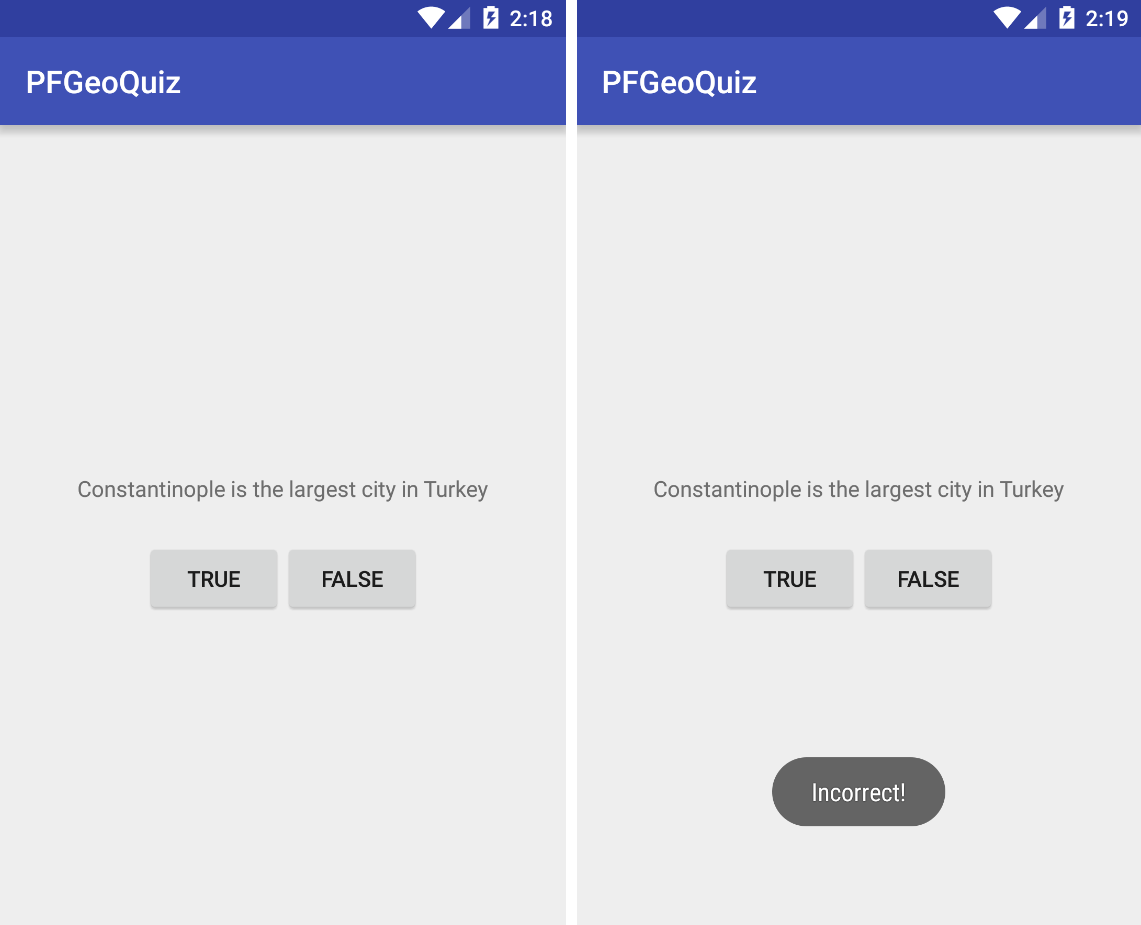Examples of how to implement the Presenter First pattern in Android based on the code from the book Android Programming: The Big Nerd Ranch Guide (2nd Edition). Projects will be continually committed as I get further into the book.
All examples are targeting API level 22 (Lollipop 5.1) with a minSdk of 16 (4.1 Jellybean).
The repository is organized according to the progression of the book with a single directory for each separate project.
To build and run the projects you need both JDK 7 and 8 installed. This is a requirement of Retrolambda which is used to compile Java 8 lambdas to Android compatible Java 7 bytecode (see Third-Party Libraries). If you use Java 8 to compile the code you must set the JAVA7_HOME environment variable and point it to the JDK7 location. If you use Java 7 to compile set the JAVA8_HOME variable and point it to JDK8.
A simple app that introduces the basic Android concepts like activities, the activity lifecycle, intents, bundles and widgets.
A more advanced app with several activities, master/detail views and fragments.
The Android architecture leaves a lot to be desired with regards to testability and separation of concerns. Presenter First is a variant of the Model-View-Presenter (MVP) pattern designed for maximum testability and in particular TDD. While originally intended for GUI-heavy desktop applications it can also be applied to apps. Doing so provides a clear and consistent way to develop any app guided by tests from a simple single-activity calculator to enterprise apps with dozens of activities, database access, and third-party communications.
To illustrate the feasibility of the pattern as much of the code as possible has been developed using TDD. What you see here is the result of mercilessly applying the algorithm for designing Presenter First triads driven by user stories as described in the Agile 2006 Conference paper (Presenter First: Organizing Complex GUI Applications for Test-Driven Development, p. 3).
When given the choice the pedagogical approach has been chosen over elegancy. A good example of this is how all the code is separated into two packages; domain or platform. This is done to emphasize how much of the code is platform agnostic (the domain). When done right Presenter First can help isolate a big part of the domain from the underlying technology and platform. The immediate benefit is testability and the ability to switch it out when needed - for example by using the same code on Android and iOS. In an ideal world the only thing that's switched out between platforms is the view implementations.
It should be noted that the solutions are implemented upon my personal interprertation of the finer details of the Presenter First pattern. It is far from perfect, especially since I hadn't written a single line of Android code before reading the book. Comments, suggestions and pull-requests are more than welcome. So if you have any ideas don't hesitate to share!
While there are many great libraries for Android development which no-doubt should be used in real-life projects, I have chosen not to follow that path here. I want to keep the code as close as possible to the book to avoid confusion. Furthermore, keeping the code close to vanilla Android reaches the broadest audience.
With that said, due to nature of Presenter First a lot of event-based communication is neccesary both within and outside the MVP triads. In Java 7 and below this means creating dozens of anonymous inner classes and passing them around which quickly becomes a mess. Retrolambda is employed to allow the usage of Java 8 lambas in Java 7 and below. This cleans up the event code considerably.








